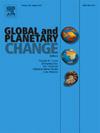Skill of isotope-enabled climate models for daily surface water vapour in East Asia
Abstract
The isotope-enabled general circulation models (GCM) have been widely applied to simulate the variability of stable isotopes in meteoric water at various time scales. The in-situ observations of water vapour isotopes are an important basis for assessing the performance of isotope-enabled GCMs, although they are still limited. Here we compiled the observations of near-surface water vapour isotopes on a daily scale at 17 stations in East Asia, and assessed the skill and the association between isotope error and meteorological errors on a daily scale. Generally, the spatial pattern and seasonal variability can be well simulated in the isotope-enabled GCMs. The models show better skill for warm and humid backgrounds, which also corresponds to the monsoonal regions with lower latitudes in East Asia. As spatial resolution is finer, the skill of models is better, which can be seen from the two GCMs. According to the correlation coefficient, the improvement of resolution is more obvious in summer than in winter, especially for IsoGSM. In addition, the correlation coefficient in winter is usually larger than that in summer. The daily modelling has good potential to investigate the daily or synoptic climate information in water isotopes. The findings are useful for understanding the applicability of isotope-enabled models in East Asia and the climate factors influencing the skill of isotope-enabled models on a daily basis.

 求助内容:
求助内容: 应助结果提醒方式:
应助结果提醒方式:


